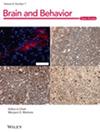Association Between Ankle-Brachial Index and Risk of Early Neurological Deterioration After Acute Isolated Pontine Infarction
Abstract
Introduction
Lower ankle-brachial index (ABI) has been linked to worse prognosis after ischemic stroke, including greater risk of recurrence. Whether the index also correlates with risk of early neurological deterioration after acute cerebral infarction is unclear.
Material and methods
We prospectively analyzed patients admitted to our hospital between February 2019 and January 2024 for acute isolated pontine infarction and who showed an ABI no greater than 1.40. Patients were classified into three groups according to whether their index was low (≤0.90), borderline (0.91–1.10), or normal (1.11–1.40). We compared the index between patients who showed early neurological deterioration or not, which was defined as an increase of at least one point on the motor item on the National Institute of Health Stroke Scale (NIHSS) or at least two points on the total NIHSS score during the first week after admission.
Results:
Of the 408 patients in our analysis, 120 (29.4%) showed early neurological deterioration. ABI showed the following distribution: low, 108 patients (26.5%); borderline, 136 (33.3%); and normal, 164 (40.2%). In multivariate regression, borderline values of ABI (0.91–1.10) were associated with significantly lower risk of early neurological deterioration (OR 0.457, 95% CI: 0.246–0.848), whereas low values (≤0.90) were associated with significantly higher risk (OR 1.975, 95% CI: 1.110–3.512).
Conclusions:
Low ABI may independently predict increased risk of early neurological deterioration following acute isolated pontine infarction. Borderline ABI, in contrast, may independently predict reduced risk.

 求助内容:
求助内容: 应助结果提醒方式:
应助结果提醒方式:


